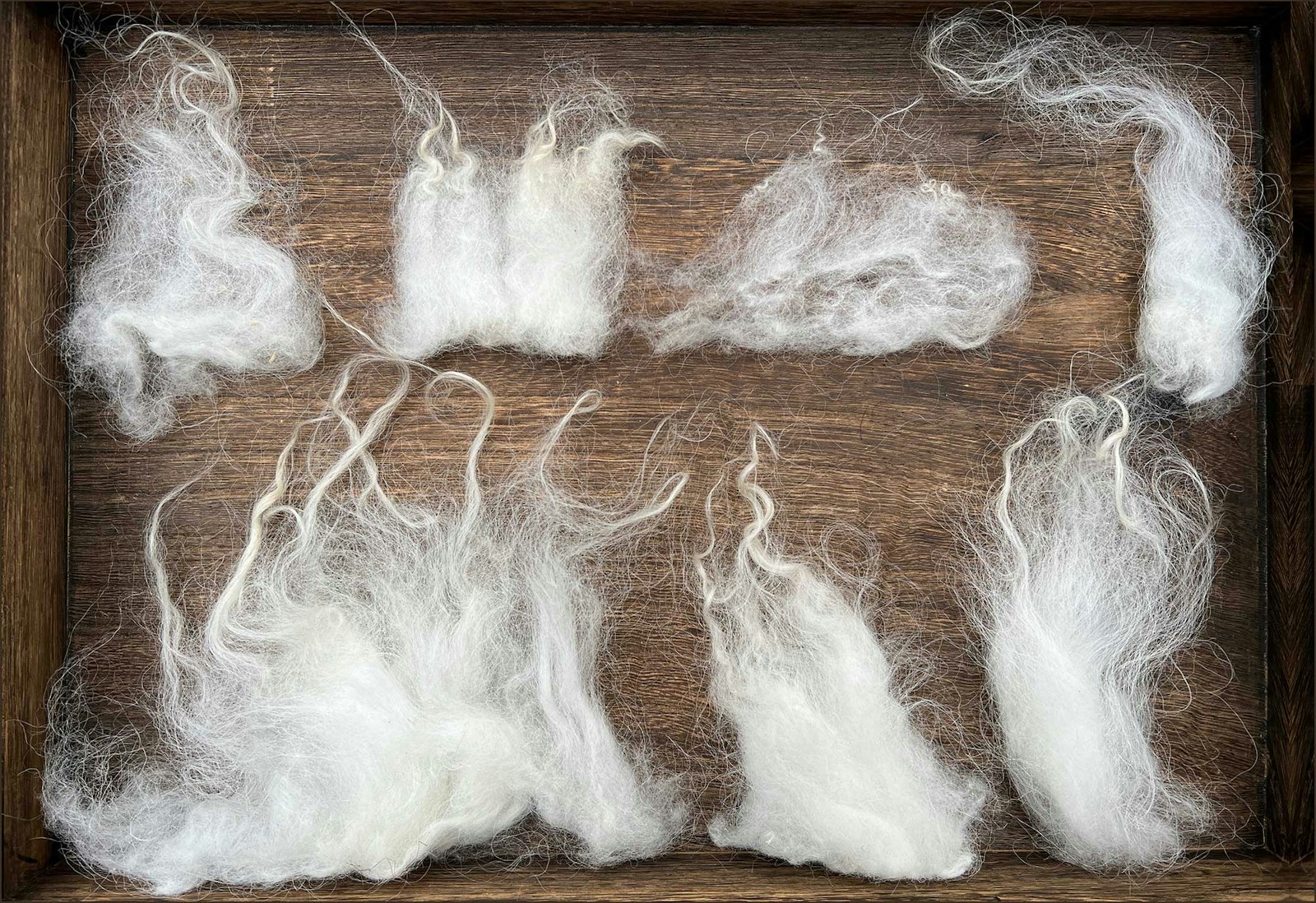Editor’s note: In the Winter 2024 issue of Spin Off, Sabine introduces us to Skudden, a rare sheep breed that has found a revival in landscape restoration efforts. Check out her Winter article “East Prussian Skudden: The World of Wool” to learn more about the breed and meet a few modern shepherds. Here, Sabine delves into how she processed a Skudde fleece to create a sweet Tunisian crochet case for her tablet.
East Prussia and the Baltic region had many heath landscapes, forests, and moors where the frugal Skudden sheep thrived. Like other traditional short-tailed sheep, Skudden have double-coated fleeces, meaning their fleeces contain hairy fibers and woolly fibers. It doesn’t mean that there are only two types of fibers, so you might also describe them as multicoated. The Skudden fleeces I worked with all contained three different fiber types: kemp, hair, and wool.
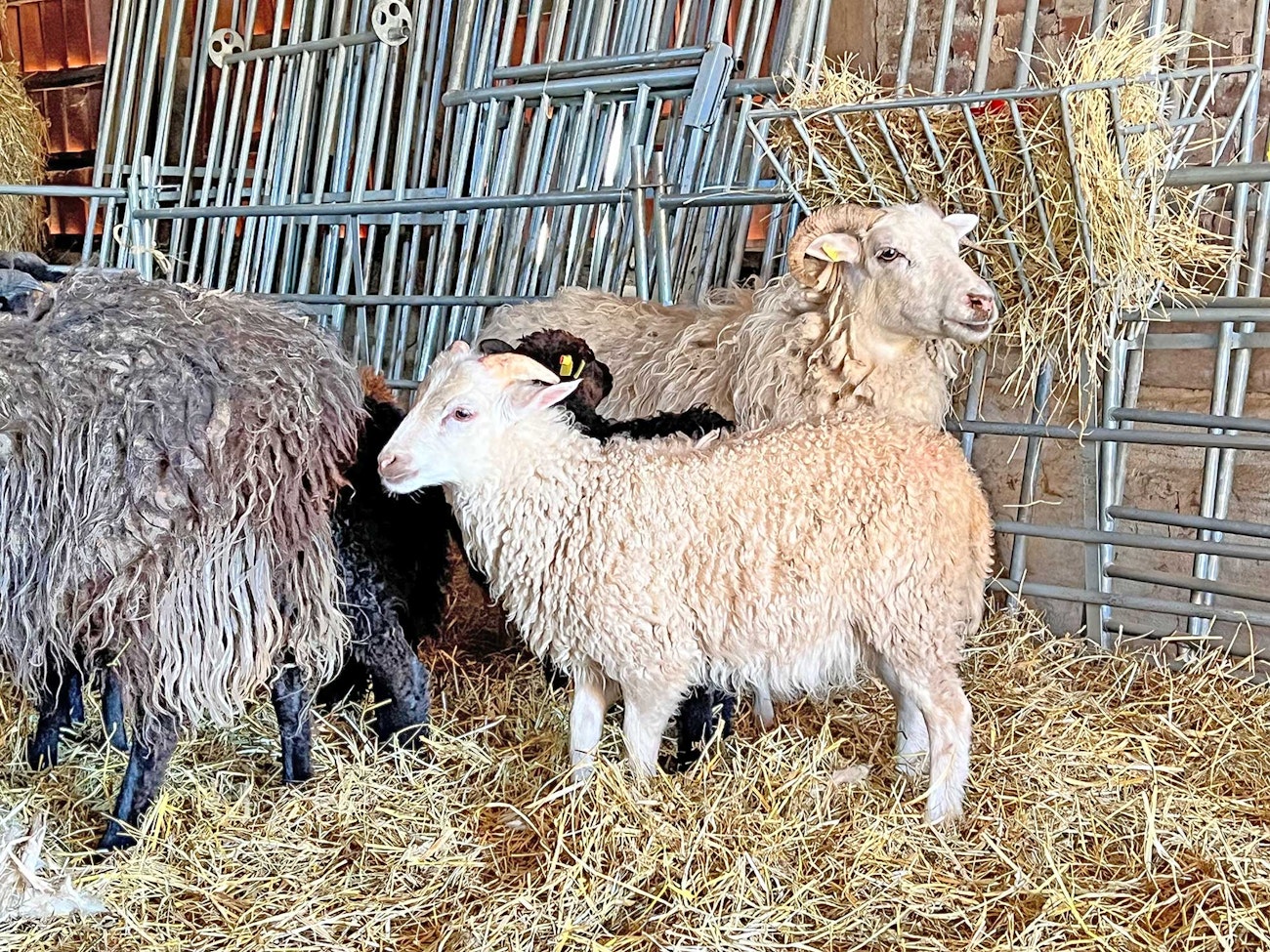 Skudden ewes and lambs at Sollingschaf, a company in Germany using Skudden for low-impact landscape maintenance.
Skudden ewes and lambs at Sollingschaf, a company in Germany using Skudden for low-impact landscape maintenance.
These so-called mixed-wool fleeces can ask for a different preparation approach compared to uniform fiber fleeces, such as we might find on a Corriedale or Merino. We can separate all the various fibers, blend the whole fleece together, or a bit of both. I want to help spinners embrace these complex fleeces and see them as opportunities to explore a huge range of handspun. While Skudden fleeces might be difficult for you to locate, breeds such as Icelandic, Spelsau, Hebridean, and more, have mixed fleeces, too. You might find some Shetland with a transition or double-coated fleece.
Kemp, Hair, and Wool: What’s a Spinner to Do?
These fiber types are also present in wild sheep but in different proportions and manifestations. Some sheep in Skudden flocks still shed partly or even completely, which also connects them to their wild ancestry.
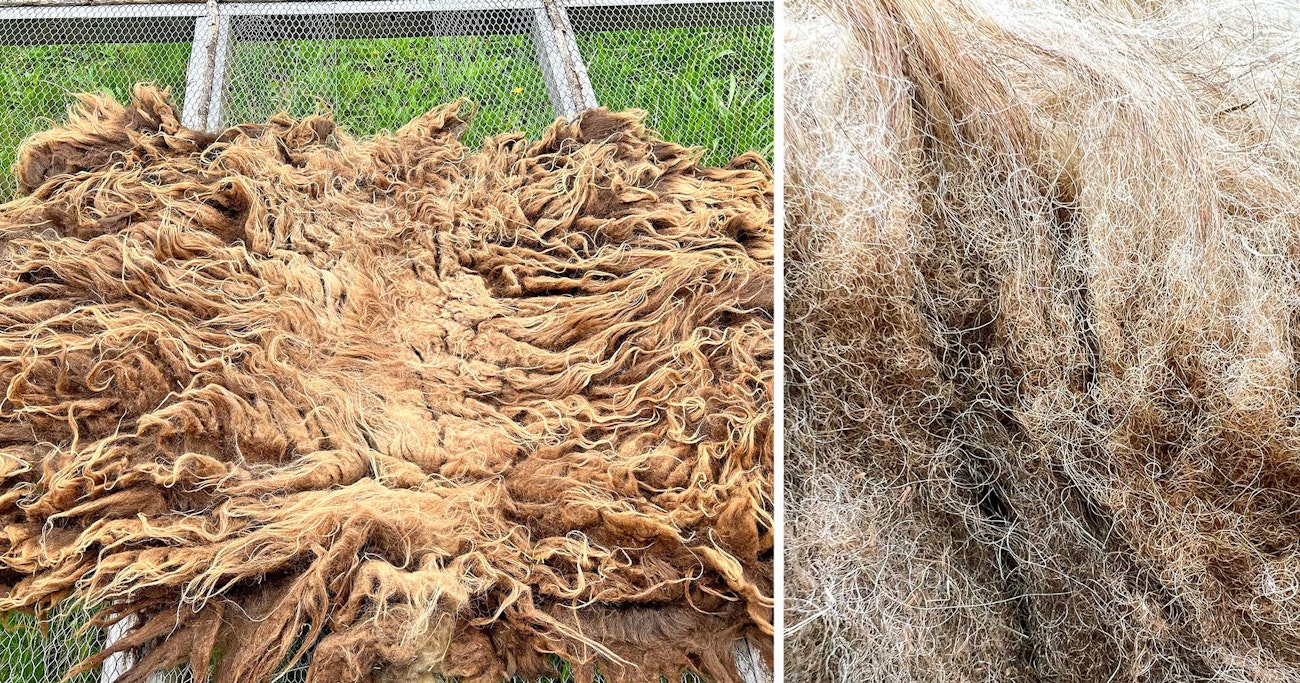 Skudden are often white, but they can be found in a range of natural colors. Here, a brown fleece is freshly shorn and a close look reveals the mix of fiber types in each lock.
Skudden are often white, but they can be found in a range of natural colors. Here, a brown fleece is freshly shorn and a close look reveals the mix of fiber types in each lock.
While the presence of short, brittle kemp fibers is seen as a flaw in many modern sheep breeds, it is a hallmark of ancient connections in others. As a spinner, I see kemp as dispensable in my yarns and textiles. It often falls out as I work with the fleeces.
Hairy and woolly fibers can be separated by pulling the hair out of the lock. Both fiber types can then be processed and spun separately. Separating hair from wool will allow you to create a stiff, sturdy, and inelastic thread that is great for warp, embroidery, mending yarns, and more. The remaining wooly fibers can be transformed into silky, bouncy, warm textiles. Using wool combs is a great option, too, and it also removes the kemp.
Alternatively, woolly and hairy fibers can be processed and spun together. If the fibers you want to combine in your spinning are of different length they tend to separate during drafting. Spinning is easier and more consistent when the length of the shortest and longest fibers are similar and they are blended thoroughly using handcards or a drumcarder.
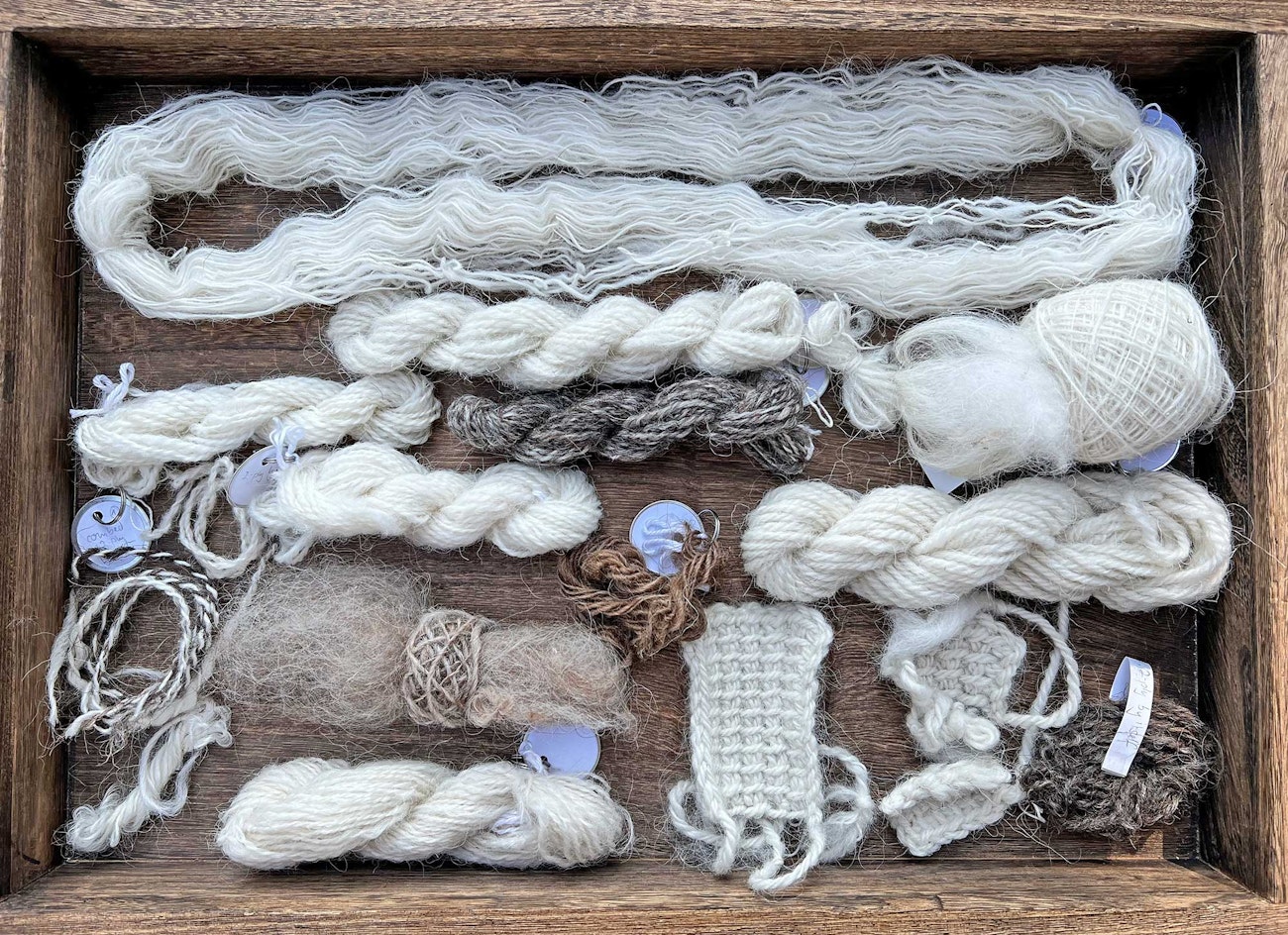 Skudden and other old breeds produce a range of fibers. In the hands of a curious spinner, a huge variety of yarns are possible.
Skudden and other old breeds produce a range of fibers. In the hands of a curious spinner, a huge variety of yarns are possible.
There are many resources that discuss this choice—blending all or separating all—but in practice, there are gray areas. You can choose to remove a part of the hairy fibers to create a range of yarns. After long coarse hair is removed, there is still a shorter, somewhat finer hair that remains. This could be left in the blend or also removed—it’s up to you!
Tips for a Less Hairy, Softer Yarn
- Use the fleece’s wooliest locks. Fleeces such as Skudden usually have areas that have woollier locks where the hair is only a little longer than the wool fibers and areas toward the back of the animal that grow a higher percentage of long fibers and less of the soft wool fibers. Sort the fleece and use the different sections for different projects.
- Remove some of the hair from the locks. Hold the cut end of a lock in one hand and pull the hairy fibers with the other hand to divide the lock. If this is difficult to do, try flick carding the lock’s tips first. By pulling only a small amount of the longest, coarsest fibers out at a time, you can easily choose and control how much hair gets separated from the lock.
- Cut the tips of the hairy fibers to make it the same staple length as wool fibers and remove some hair. This can raise eyebrows amongst spinners, but this is what often happens when double-coated fleeces are processed at a large carding mill. The long fibers are shortened during carding, making them blend more easily with the shorter, softer fibers. Give it a try and see what you think.
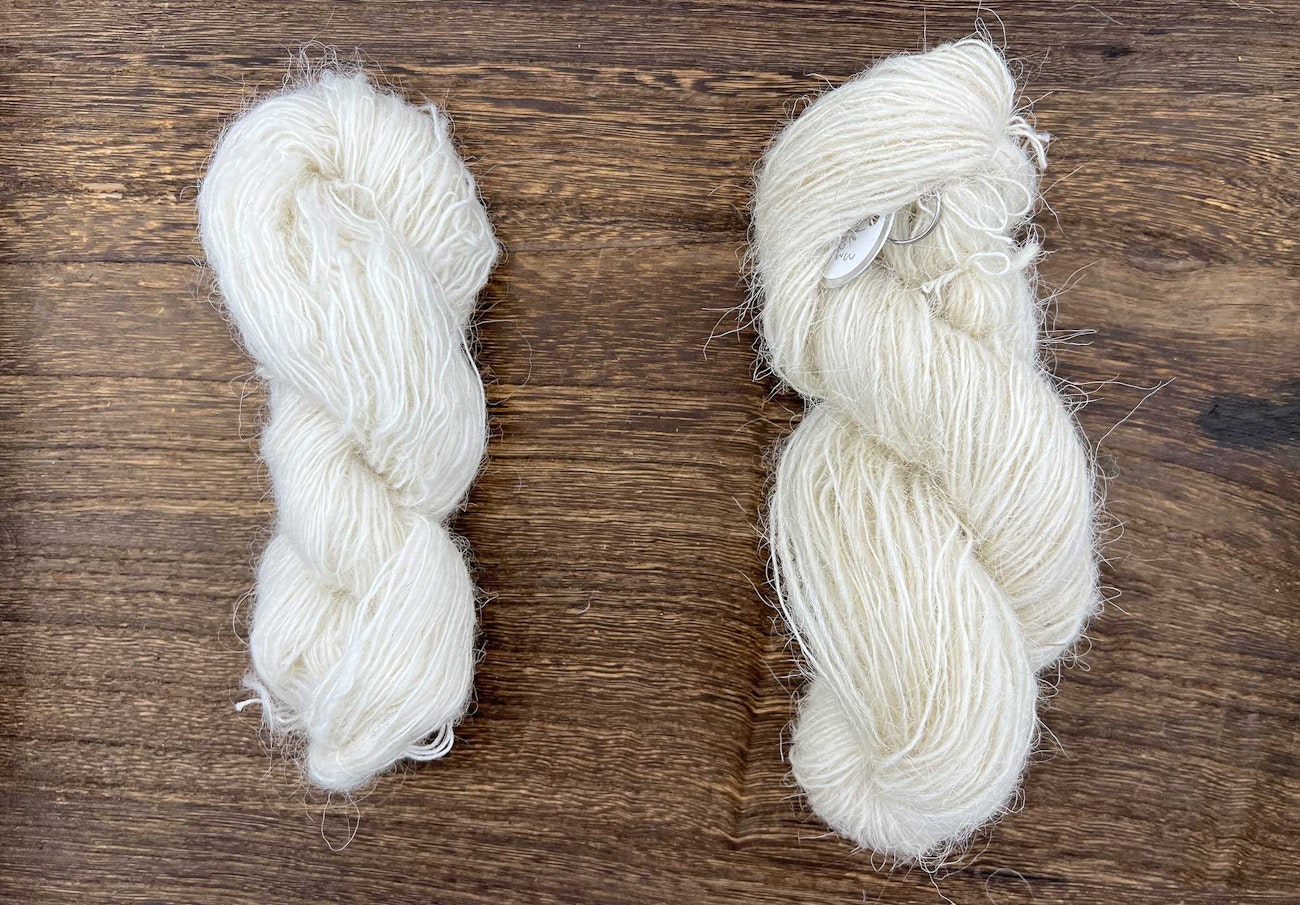 Combed Skudden singles. The softer, whiter skein on the left and the hairy, more beige skein on the right are from different fleeces—there’s a wide range.
Combed Skudden singles. The softer, whiter skein on the left and the hairy, more beige skein on the right are from different fleeces—there’s a wide range.
Processing a Skudde Fleece
Choosing a fleece has a big impact on the final product. I chose a fleece shorn in April, skirted it, and divided it into 200- to 300-gram portions. I put them into mesh bags to keep the locks organized during soaking and washing.
Once the fleece was dry, I used a flick card to prepare the locks for drumcarding. First, I flicked the tip end to open the locks. Flicking the cut end removed most of the kemp. Some parts of the fleece contained dry little pieces of grease, most of which was removed during flick carding and the rest through drumcarding. To separate the finer and shorter wool fibers, I pulled them out of the flick card and added them to the pile of prepared fiber. Very short fibers, grease, and kemp remained in the flick card, and some locks had hairy parts that didn’t wash at the tips; I cut off those tips.
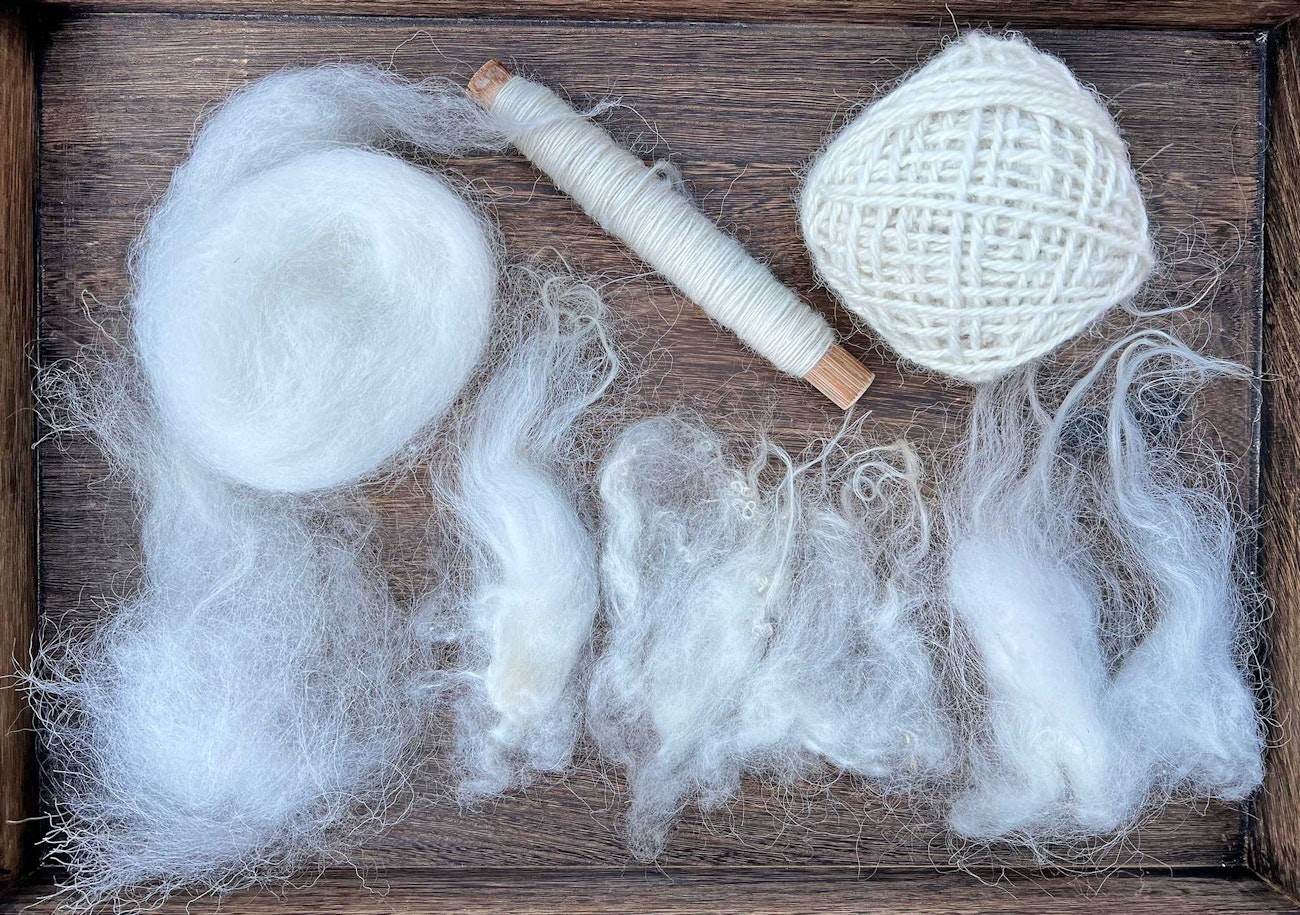 After flick carding and then drumcarding her fleece, Sabine dizzed a roving (top left) ready for spinning.
After flick carding and then drumcarding her fleece, Sabine dizzed a roving (top left) ready for spinning.
Then the fibers went on the drumcarder. Putting enough fiber on the drum and pressing the brush against it, the emerging batt was more on the dense side. I ran the batt through the carder one more time. To remove more air, I dizzed the wool off the carder, getting two- to three-foot strands of a denser, roving-kind of preparation. Rolled into nests, they stored beautifully until I was ready to spin.
A. Sabine Schröder-Gravendyck, DVM, makes her home on Germany’s North Sea coast where she works as a naturalist and educator in sustainability and ecology. She is always looking for new ways to help people merge their personal spaces with nature. Learn more at florafauna.pro.

